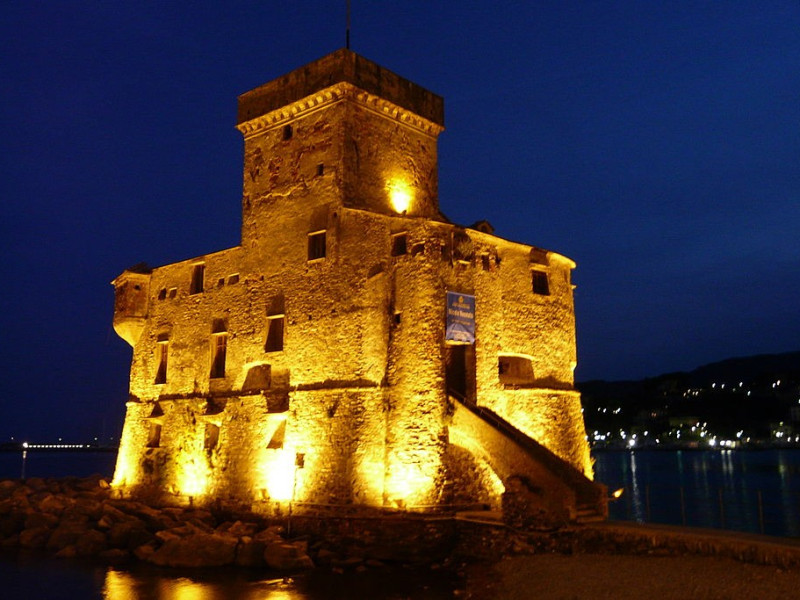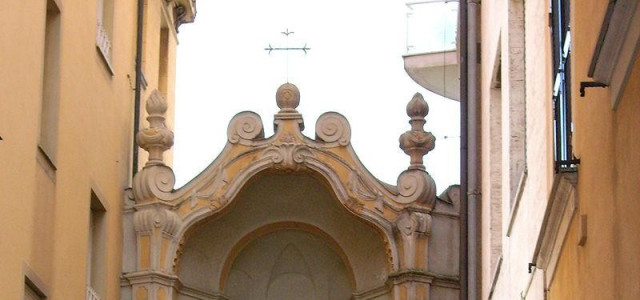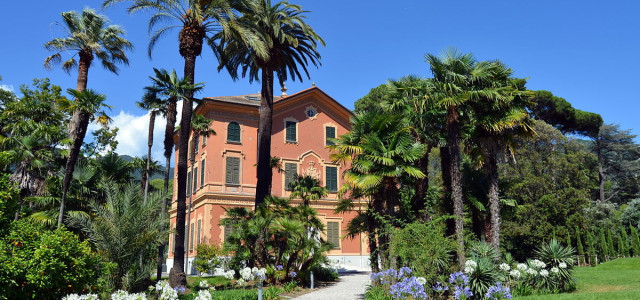Rapallo
Rapallo is a municipality in the province of Genoa, in Liguria, northern Italy. As of 2011 it counts 30,742 inhabitants. It is situated on the Ligurian Sea coast, on the Tigullio Gulf, between Portofino and Chiavari. The climate is moderate. Many of the villas are built in the hills that rise immediately behind the city, protecting them from strong northern winds. Rapallo area is included in the Parco Naturale Regionale di Portofino, encompassing the territory of six communes. History The first settlement dates probably from the 8th century BC, although the findings have not clarified if it was Etruscan or Greek. Conquered by the Lombards in 643, the village of Rapallo was included in the county of Genoa under Charlemagne. The name of the city appears for the first time in a document from 964. In 1203 the Podestà of Rapallo was created, and the town became a Genoese dominion in 1229, remaining under that aegis until the Napoleonic Wars. Galleys from Rapallo took part to the famous Battle of Meloria of 1284. On 5 September 1494, it was captured by the Aragonese, but three days later 2,500 Swiss troops ousted them. During the 16th century it was attacked and sacked by the Ottomans and Barbary pirates. To help defend the village against such attacks a castle was built on the seafront. In 1608 Rapallo was made into a Capitaneato (captainship) of its own, as part of the Republic of Genoa. In the late 18th century it was captured by the French who, after several clashes against Austro-Russian troops, in 1805 annexed it to the Apennins département. In 1814 the English freed it, and the following year the city was given to the Kingdom of Sardinia-Piedmont as part of the Duchy of Genoa. In late 1917, an Anglo-Franco-Italian conference met at Rapallo following the disastrous Italian defeat at Caporetto. It was decided to create a supreme war council at Versailles and to shift some French and British troops to the Italian front. On 12 November 1920, Italy and the Kingdom of the Serbs, Croats, and Slovenes (later renamed Yugoslavia) signed the Treaty of Rapallo, 1920, which resolved the frontier issues between them without reference to the other Allies. Italy acquired the strategically important crest of the Julian Alps as her boundary in the northeast. Also concluded at Rapallo was the Russian-German Treaty of Rapallo of April 1922, in which both countries renounced claims to war reparations and renewed diplomatic relations. This agreement marked the emergence of Russia and Germany from the diplomatic isolation caused by World War I (1914–18). During World War II numerous partisans from Rapallo were shot by German occupation troops. Rapallo has been known for its climate that made it over the years the winter residence of preference for most of the affluent Italians living in the North West of Italy. Its proximity to the coast makes for mild winters where people can enjoy easy strolls on the sunny promenade and the golfers can enjoy one of the oldest courses in Italy, opened in 1930. Friedrich Nietzsche wrote that the ideas for Zarathustra first came to him while walking on two roads surrounding Rapallo, according to Elisabeth Förster-Nietzsche in the introduction of Thomas Common's translation of Thus Spake Zarathustra. The writer Ezra Pound spent much of the late 1920s and 1930s living in the town. The author, caricaturist and parodist Max Beerbohm lived in Rapallo from 1910 until his death in 1956, returning to Britain during World War I and World War II. The influential theatre designer and artist Gordon Craig lived in the Villa Raggio, next door to Beerbohm, from 1917 to 1928. Main sights The Castello sul Mare (Castle-on-the-Sea), erected in 1551 to counter the frequent pirate attacks. It includes a small chapel dedicated to St. Cajetan, built in 1688. The Castello di Punta Pagana is a seat of the Sovereign Military Order of Malta. It was finished on 28 July 1631. The historical Tower of the Fieschi and the Torre Civica (1473). The Porta delle Saline, the only gate remained of the ancient walls. Basilica of Sts. Gervasius and Protasius, consecrated in 1118 and restored in the early 17th century. In 1679 a new apse was added, deleting the former Romanesque character of the edifice. It has a leaning bell tower. The church of St. Francis of Assisi (begun in 1519). The Sanctuary of Nostra Signora di Montallegro ("Our Lady of Montallegro", 1558–1640). The ruined Monastery of Valle Christi (13th century), abandoned in 1568 after pirate ravages. Notable People Max Beerbohm, the caricaturist and essayist, Iived in Rapallo from 1910 until his death in 1956. Domingo Ghirardelli, founder of the Ghirardelli Chocolate Company was born in Rapallo in 1817 and also died there while visiting in 1894. Sir Edmund Grimani Hornby, former Chief Judge of the British Supreme Consular Court at Constantinople and British Supreme Court for China and Japan died in Rapallo in 1896 and was buried there. Transport Rapallo railway station, opened in 1868, forms part of the Pisa–La Spezia–Genoa railway. Twin towns Iquique, Chile Gallery External links Parco Naturale Regionale di Portofino (Italian) Information about Rapallo References




